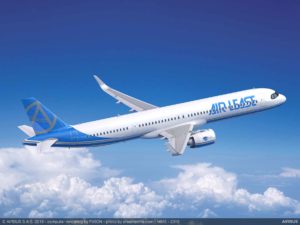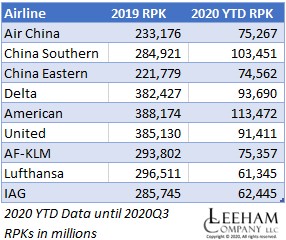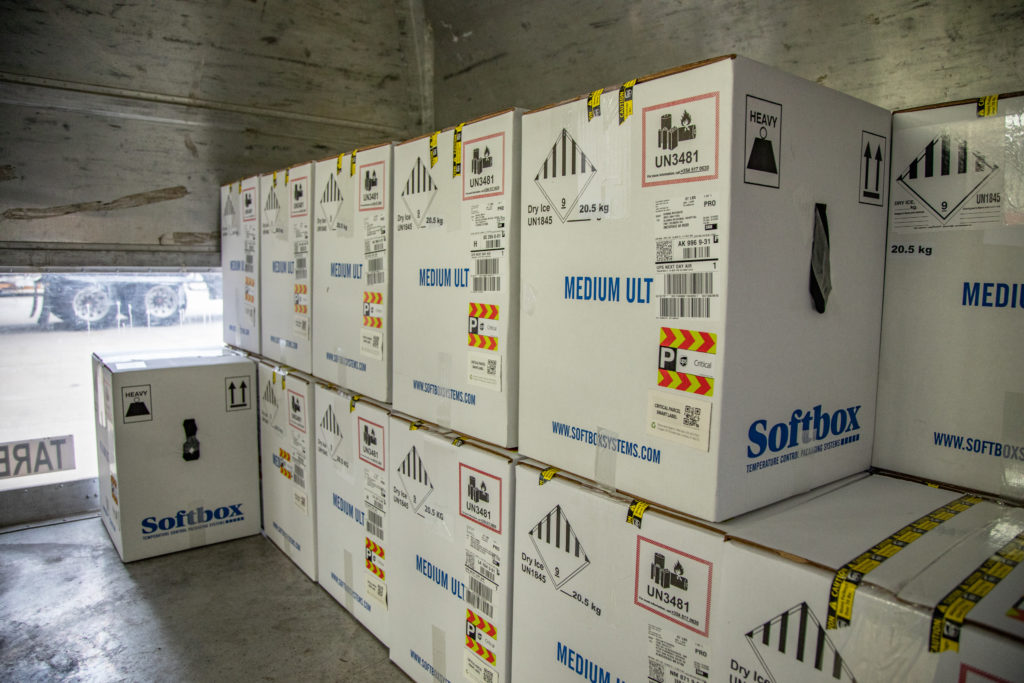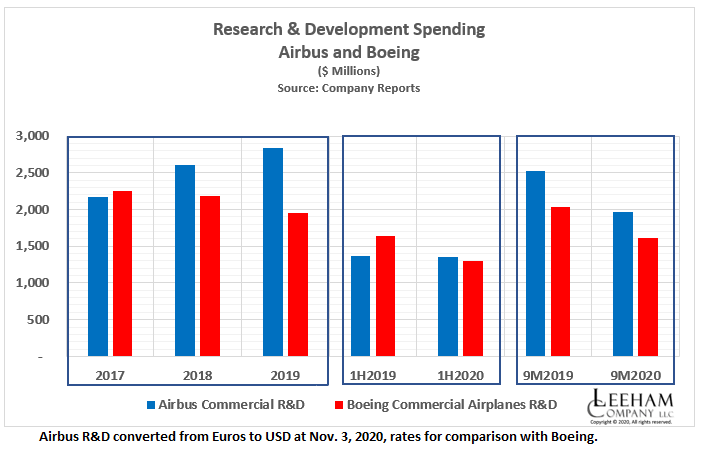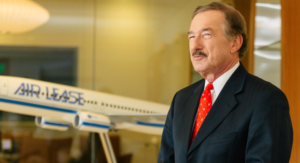Leeham News and Analysis
There's more to real news than a news release.
HOTR: Annual Reports give hint to MAX return in China
By the Leeham News Team
May 4, 2021, © Leeham News: Annual reports from some Chinese airlines give an indication when Boeing can expect to resume deliveries of the 737 MAX there.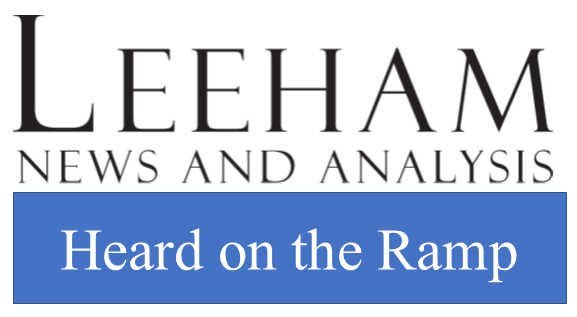
China Southern’s report issued this week indicates 48 MAXes will be delivered next year. Another 44 are shown to be delivered the following year. This compares with five A320 series this year and none next year. Only 15 A320s were delivered in 2020.
Five 787s and one 777s are scheduled for delivery to China Southern this year. Four A350s are scheduled for delivery this year and next.
Diverging financial fortunes for Airlines and Lessors
Subscription Required
By Vincent Valery
Introduction
April 5, 2021, © Leeham News: Most airlines and lessors that publish their financial results publicly have done so for 2020. The COVID-19 pandemic harmed all stakeholders’ financials in the commercial aviation industry. However, the impact varies significantly from one group to another. There are also significant differences between companies within a group.
LNA collected financial information on airlines and lessors to assess the pandemic’s economic damage. The differences in financial impact have altered the balance of power within the commercial aviation ecosystem. The varying fortunes will impact each stakeholder’s say in current and future aircraft programs.
Summary
- A financial bloodbath for airlines;
- Financial outliers;
- Lessors mostly ok for now;
- Impact on future OEM programs.
China’s hollow airline “recovery”: capacity without revenue
Subscription Required
By Judson Rollins
Introduction
March 15, 2021, © Leeham News: A flood of media coverage has centered on Chinese airlines’ supposed recovery from COVID-19.
The Chinese “big three,” Air China, China Eastern, and China Southern, made headlines with their rapid restoration of flights and even the announcement of new routes. Industry commentators and industry group IATA trumpeted the “recovery to pre-crisis levels” in China.
New routes garner headlines in normal times, but even more so now. And there is other good news: the US Transportation Security Administration last week processed the highest number of passengers since the pandemic all but shut down traffic a year ago.
But yield quality of such traffic in most markets is problematic. Cheap fares draw leisure travelers, yet business traffic remains a fraction of pre-pandemic levels and there are few signs of near-term recovery. Executives at Lufthansa Group, where business travelers deliver nearly 60% of revenue, said earlier this month they believe such travel will ultimately only return to 80-90% of pre-pandemic levels – and not until mid-decade.
If market analysts want to examine China’s recovery, they have to look at the whole picture. China may be leading the way in capacity restoration, but it’s not the “good” news touted.
The positive trends in China are in mainland domestic flights and seats, not passenger traffic or revenue — and not at all for regional (Hong Kong, Macau) or international routes. Scant attention has been paid to operational data from the country’s airlines – and even its national aviation regulator – showing passenger traffic even on domestic routes is still well below pre-COVID levels.
The “big three’s” third-quarter 2020 financial reports – when the domestic market was supposedly beginning to hit its stride – showed revenue losses far greater than the airlines’ pre-crisis share of revenue from international service. Even those disastrous results included a strong tailwind from increased cargo revenue, as the airlines don’t break out their revenue by business segment outside of annual reports.
LNA dug into the reports of China’s three state-owned airlines, privately held Hainan Airlines, low-cost carrier Spring Airlines, and monthly data releases from the Civil Aviation Administration of China (CAAC). Much of this data is only published in Mandarin, or in English only after long delays, so we enlisted translation help to build a more complete picture.
Summary
- Capacity is (mostly) back, but passenger volumes haven’t followed.
- Desperate sales promotions are widespread among Chinese carriers.
- Third quarter 2020 financial reports show grave revenue losses.
- Fourth quarter traffic isn’t materially better – and early 2021 is worse.
- Continued excess capacity appears to be driven by politics, not demand.
Day of reckoning for the HNA Group
By Vincent Valery
Jan. 31, 2021, © Leeham News: After years of financial struggles, the HNA Group finally declared bankruptcy on Jan. 29. Despite a government-led attempt at restructuring the over-indebted group, the group couldn’t avoid such a fate due to the struggles of its numerous subsidiaries exacerbated by the COVID-19 pandemic.
LNA wrote an article in the fall of 2019 on the group’s complex structure and ongoing financial struggles.
The ascent of the Big Three Chinese carriers
Subscription Required
By Vincent Valery
Introduction
Jan. 18, 2021, © Leeham News: As the COVID-19 outbreak spread throughout China in January last year, their airlines were the first hit by the sudden collapse in passenger traffic. Most of the world’s carriers would follow the same faith by March.
However, as China managed to bring the COVID-19 outbreak under control, domestic traffic progressively picked up. According to IATA statistics, October 2020 Revenue Passenger Kilometers (RPMs) in domestic China were down 1.4% year-over-year, compared with a 60.7% decline in the domestic USA market. However, one should note that travel between China and the rest of the world remains very limited, notably due to the draconian quarantine requirements on arrivals from abroad.
Due to the faster recovery in domestic passenger traffic, China Southern Airlines had more RPKs year-to-date than Delta and United, only trailing American Airlines. Air China and China Eastern Airlines have had comparable year-to-date RPKs with Air France – KLM, and more than Lufthansa and IAG. Below is a summary chart:
The three carriers received significant financial support from the Chinese government to sustain their operations.
The COVID-19 pandemic will likely accelerate the big three Chinese carriers’ global importance compared with their equivalents in the USA and Europe. With that in mind, LNA analyzes their structure and financials in recent years.
Summary
- Three state-owned enterprises;
- The specific structure of each carrier;
- Varying financial performance;
- Ambitious growth plans.
Outlook 2021: Despite vaccines, COVID-19 will continue to dominate aviation in the coming year
Subscription Required
By Judson Rollins
Introduction
Jan. 4, 2021, © Leeham News: Recent approval of two major vaccine candidates are driving euphoria among aviation investors, employees, and travelers. Many commentators are talking about a “return to normal” later this year.
Alan Greenspan’s famous phrase, “irrational exuberance,” comes to mind. Vaccine approvals provide reason for hope, but not in the near term. Even Singapore’s government, one of the world’s most efficient, says it will need most of 2021 to fully vaccinate its population.
On the other end of the economic spectrum, Duke University’s Global Health Institute says low-income countries may have to wait until 2024 if high-income countries continue to reserve vaccines for their own populations.
Pharmaceutical giants Pfizer, Moderna, and AstraZeneca, which have released efficacy data on their vaccines and are now obtaining approval from various jurisdictions, announced a combined capacity to produce vaccines for up to 3.1bn people by the end of 2021. China’s Sinovac claims it will be able to produce 600m doses, but it is still evaluating the efficacy of its vaccine candidate.
Summary
- Reluctance to take vaccine likely to slow rollout
- Borders re-opening depends on rollout, proof of vaccination
- Pre-travel testing may be a dubious solution
- Business, leisure travel likely to be permanently impacted
- Airline financial woes likely to continue
- New aircraft demand will stay low in 2021
A year of reckoning for Low-Cost Long-Haul
Subscription Required
By Vincent Valery
Introduction
Dec. 7, 2020, © Leeham News: Since the beginning of the COVID-19 outbreak, numerous carriers have either ceased operations or gone into court-supervised restructurings. Among those undergoing restructurings are the world’s two largest low-cost long-haul airlines, AirAsia X and Norwegian Air Shuttle.
Both carriers were in a precarious financial condition before the pandemic. Their troubles contrast with the financial solidity of some major low-cost airlines, including Ryanair and Wizz Air.
IAG closed its Level base in Paris Orly, while Lufthansa ceased SunExpress Deutschland’s operations. NokScoot, a joint venture between Singapore Airlines and Nok Air, also ceased operations after years of losses.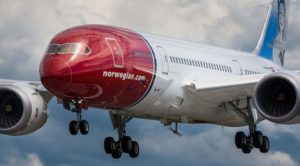
Before the COVID-19 outbreak, Primera Air ceased operations in 2018. Wow Air and XL Airways folded in 2019. Along with AirAsia X’s and Norwegian’s financial struggles, this raises questions about the viability of the low-cost long-haul business model.
LNA looks at the sequence of events that led to four major carriers’ failure and the viability of their business models.
Summary
- Low-cost long-haul isn’t new;
- Bringing no-frills to the next level;
- Undercapitalized for the level of risk;
- When going mainstream does not work;
- One certainty and a question mark on viability.
HOTR: Airbus, Boeing R&D spending continues decline
By the Leeham News Team
Nov. 5, 2020, © Leeham News: Research and Development spending by the Airbus and Boeing commercial units declined year-over-year.
The movement is in keeping with cost-cutting by the Big Two OEMs. For Airbus, the reduction is due to the coronavirus pandemic. For Boeing, it’s due  to the 737 MAX grounding and the pandemic.
to the 737 MAX grounding and the pandemic.
Boeing’s spending typically lags Airbus. Richard Aboulafia, a consultant with Teal Group, for years criticized Boeing over its smaller spending, favoring instead shareholder value. Airbus overtook Boeing is innovative single-aisle airplane development years ago. Boeing’s choice of creating a 777 derivative instead of a new design to compete with the A350-1000 proved to be a weak move. There are only a handful of customers and the skyline is weak.


